The Crimson Diamond review
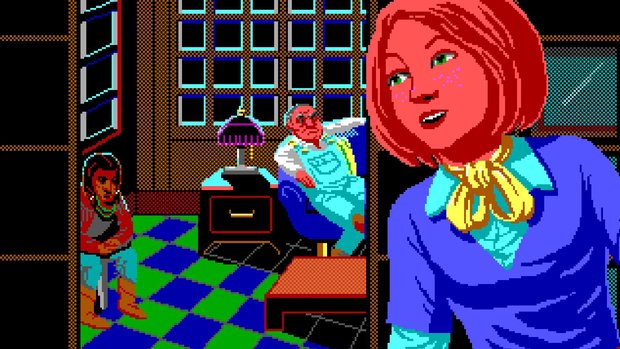
- 2 Comments
Delightful EGA-styled murder mystery is a gem that’s sure to appeal to both retro game fans and newcomers to text-driven adventures
For those of you who have been eagerly awaiting for years to play The Crimson Diamond: Yes, it’s as amazing as you were hoping. Go get it.
For those who have only more recently become aware, The Crimson Diamond is the labor of love from Julia Minamata, first-time indie designer from Toronto. This murder mystery is an homage to EGA Sierra titles, sporting a 16-color palette, a parser interface, and a design highly reminiscent of Roberta Williams’s classic The Colonel’s Bequest. Taking the best features of those nostalgic 80s adventures and supplementing them with modern conveniences, Julia has successfully created a charming and engaging game that ranks right up there with the best Sierra had to offer.
Nancy Maple is a rookie geologist in Ontario (circa 1914) who has been sent by her employer, the Royal Canadian Museum, to the small fictional town of Crimson to investigate the possible discovery of diamonds. She winds up at the remote lodge of a lonely, old, and wealthy man named Evan Richards, who stayed in his father’s home (built on First Nations’ land) after the garnet mines were depleted and the colonizers skipped town. Hot on Nancy’s heels are a cast of characters who appear to be highly motivated to find diamonds or to prevent others from finding them.

First and foremost is Evan’s sister Nessa, who comes with her lawyer Corvus Shaw in tow in hopes that their father left a will bequeathing the land to her. Albert Respa is a fellow geologist sent from Antwerp by the Canadian government to try to confirm the report of diamonds in the area. Kimi Kishiro is a twitcher who’s seemingly there only to lay eyes on the local cormorant population. Meanwhile, Nathan Cardinal is a local Indigenous man who is friends with Evan and has been promised (with a handshake deal) the land back for his people once Evan dies. Margot is Evan’s suspiciously younger girlfriend, and Jack Precord is the dutiful but oft-irritated caretaker. Evan begrudgingly welcomes the newcomers, asking Nancy and Kimi to leave the next morning as he actually closed the lodge to the public just recently so he could retire. Except overnight, the main bridge out of town is blown up. With nowhere to go, Nancy and Albert set off to conduct their mineralogy studies while the rest of the group goes about their own affairs until one of them is murdered, setting the stage for a classic Agatha Christie-style whodunit.
Before going into gameplay specifics, I need to emphasize how well this mystery is designed. First and foremost, the characters all have their own motivations and act consistently throughout the entirety of the game. This may not appear to be true at first glance, when Nancy only has bits and pieces of the whole story. But after finishing the case (and especially after playing through it a second time with a walkthrough), I am happy to report that all the puzzle pieces fit seamlessly together. Thankfully, unlike the Laura Bow games, people you suspect actually stay alive here, making your investigation complex and meaningful instead of just a (both literal and figurative) process of elimination. Finally, there is plenty of suspect goings-on to investigate outside of the murder itself, leaving you motivated to check out everything and everyone even if you feel you’ve deduced the perpetrator early on.
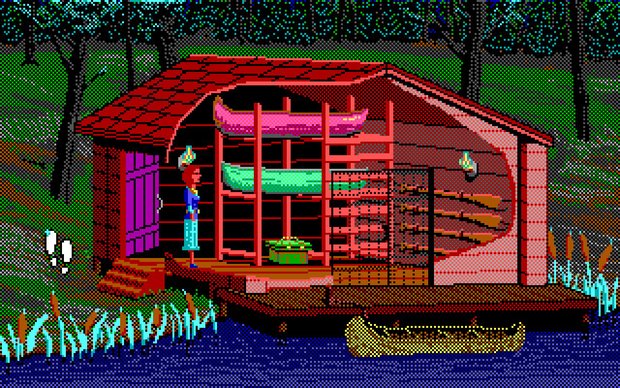
One of the primary ways you will investigate is by eavesdropping on everyone. While some conversations are required listening before the game will advance, many can be missed, so the astute adventurer will want to snoop around prior to advancing the story. However, missing out on conversations doesn’t automatically steer you towards a worse game outcome, as Nancy will also be making all sorts of scientific observations, not only geological, but also pulling everyone’s fingerprints and footprints. Recalling the entertaining investigative work of Police Quest 2, gathering physical evidence goes a long way toward understanding everything going on behind your back.
Interaction is performed through a parser that pauses the game world while you type. For those unfamiliar with or otherwise averse to a typing interface, there is an incredibly helpful tutorial that walks you through all of the basics, including walking (which can be done by holding the arrows keys, tapping them, or pointing and clicking with the mouse), giving Nancy commands, and manipulating inventory items. The parser understands significantly more than the old Sierra games did; I only had to guess the verb required a couple of times. Fans of text adventures will also be relieved that many familiar shortcuts are here, including typing “x” for “examine,” “o” for “open,” as well as some new shortcuts that can be helpful for your interrogations. For example, if you want to “ask Jack about the lodge,” you can type “a jj ab lodge.” Or you can mix and match real words and accepted abbreviations to fit your play style.
You can interact with virtually everything you can see, prompting a game response to “look” and other logical actions, such as opening drawers or climbing trees. One of my favorite optional actions is going through the motions of taking a shower, which is not only well (and tastefully) animated, but comes with a short cutscene that further adds to the mystery. The inventory can either be displayed with icons or text. While occasionally you may need to combine items (with commands, not drag and drop), Nancy will make a lot of keen observations herself (at your behest) by looking at the items or examining them closely with her handy loupe.
The puzzles are generally on the easy side, with several offering alternate solutions. I solved one puzzle – to great satisfaction – using a several-step, scientific solution I did internet research for to give me an idea on how to proceed. As it turned out, there was a much simpler way to solve it, but the option of tackling the problem my own way was much appreciated. And while the standard Sierra time advance system is in place, many puzzles can be solved out of order or even in different chapters.
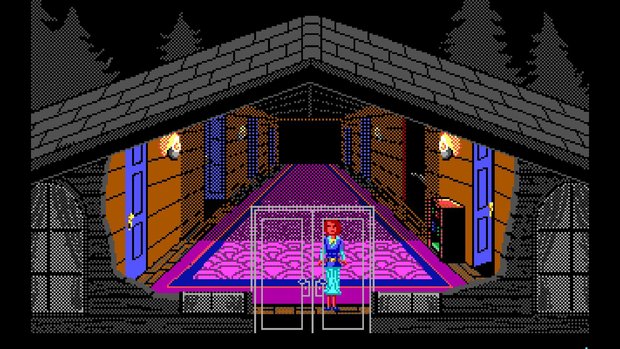
Other modern conveniences are also a blessing. Nancy takes notes regularly, which you can access at any time to remind yourself of what you’ve done, as well as any tasks Nancy thinks may be pertinent. Additionally, typing “review” gives a brief summary of the current task at hand. At times I felt this made the investigation perhaps too easy (especially since Nancy verbalizes hints regularly without prompting), though there is always the option to ignore the notebook altogether to give yourself an extra challenge.
You can manually save at any time, but The Crimson Diamond will frequently auto-save (filling up to 50 save slots!), allowing you to easily jump back to further investigate a previous scene, or if you accidentally get yourself offed. Yes, you can die; there appear to be seven ways you can do so. While I didn’t find all of them, the ones I did encounter were entertaining and generally avoidable with common sense. There is no way to lock yourself out of finishing the game, though you can certainly miss investigative paths that give you a less than ideal ending.
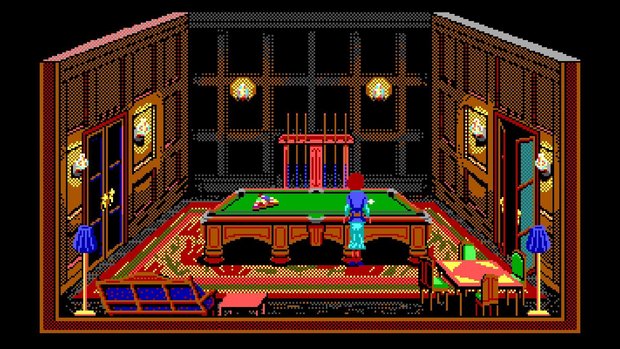
The graphics and sound may not reach the heights of, say, King’s Quest IV, but they more than hold their own. The 16-color palette is used effectively to make the lodge and surrounding areas come to life, from the grimy smokehouse and sparkling waterfall to the opulent study and billiards room. Each area is distinct and everything is easy to discern. I don’t recall any pixel hunting frustration, and even if you do encounter difficulty, the look command will describe or hint at everything you need to interact with in the current scene (and plenty of things you don’t).
No shortcuts were taken with the animations either, as even the most insignificant of actions such as turning on a faucet are clearly shown. Nancy can sit on most surfaces meant for such, and each animation is so fluid that I found myself genuinely in awe. It gets a little comical at times when Nancy stuffs a pool cue somewhere on her person, but it wouldn’t be a classic adventure game without an unrealistically expansive inventory. Another impressive feature is that when Nancy walks behind something in the foreground (such as a door, or the boathouse), the object in the foreground will become temporarily transparent so that Nancy doesn’t disappear on the screen.
The similarly retro-styled score by Dan Policar is understated and sparse, but what’s present effectively sets the mood, if lightly so. There are few jump scares, and the tense moments are accompanied by modestly haunting music, allowing the player to live in the moment rather than being overwhelmed by a cacophony of instruments. Many scenes have no music at all, which was typical of this style of game from its original era. I greatly appreciated the pleasant ding that accompanies positive actions, and the ambient sounds outside (such as birds chirping) keep things lively. The atmosphere even changes when you're hanging out after dark. There is no voice acting, but the characters’ personalities all shine through in the well-written dialogue.
While there is no points display on the screen, the game is keeping track and will score you on your investigative prowess at the game’s end. Speaking of which, the finale is executed to perfection. Not only is the climax a cool showdown (reminiscent of Gabriel Knight: Sins of the Fathers), the denouement is indelibly satisfying. Nancy will review her notes and you’ll be asked to make your best guesses about all of the mysteries at hand. You’ll then have the opportunity to present physical evidence against the perpetrator – if you managed to collect it, that is. How you do in this section will alter the extensive epilogue and likely motivate you to replay the game immediately. Even if you do perfectly, there are three alternate endings (and variations on those) that make replaying worthwhile. The game will also give you the option of having Nancy wonder about areas she should have investigated more closely if you want some hints for your next playthrough.
Final Verdict
The Crimson Diamond has all the hallmarks of an excellent text-driven murder mystery while masterfully executing the EGA-style aesthetic for modern times. For the nine or so hours I spent on my first playthrough, I was consistently engaged and my investigative gears were constantly turning. And then I was rewarded by an ending that kept me invested until the credits rolled while neatly tying up all the remaining loose threads. My only reservation, and it is relatively minor, is that the mystery could have provided just a bit more challenge. Though this may be a blessing to help introduce a whole new audience to the simple yet evocative pull of old-school adventuring. Julia Minamata may be standing on the shoulders of giants, but from there she has delivered an experience that towers over many of the games it was modeled after, alongside the very best of the genre.
Hot take
Move aside, Laura Bow. Nancy Maple is the reigning queen of retro-styled murder mysteries in The Crimson Diamond, a clever, engaging, and satisfying tale that is sure to entertain fans of Sierra’s text-driven EGA classics while being accessible to adventurers new to this style of game.
Pros
- Believable mystery that keeps you on your toes
- Many and varied examples of detective work to engage you throughout
- Cast of characters is diverse and entertaining
- Graphics and sound compete with some of the best in the Sierra EGA library
- Modern conveniences will ensure all players feel welcome
- Terrifically satisfying ending
Cons
- Mystery may be too easy for experienced players
Beau played The Crimson Diamond on PC using a review code provided by the game's publisher.
Note: The original review referenced a lack of ambient sound in the pre-release build of the game we played. This issue is no longer relevant to the launch version, so the article wording has been adapted accordingly.




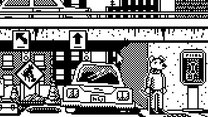
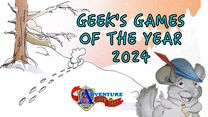




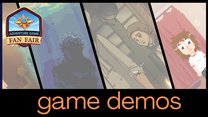
2 Comments
Want to join the discussion? Leave a comment as guest, sign in or register in our forums.
This is a really good game, I just finished it
Reply
We are eating well in the adventure game community
Reply
Leave a comment